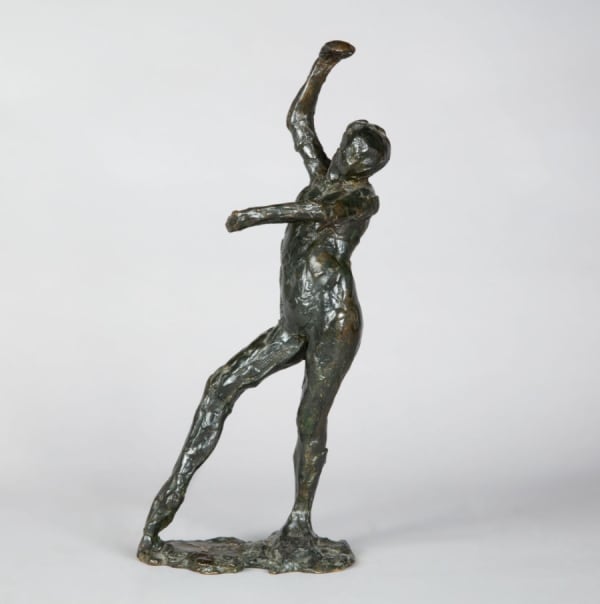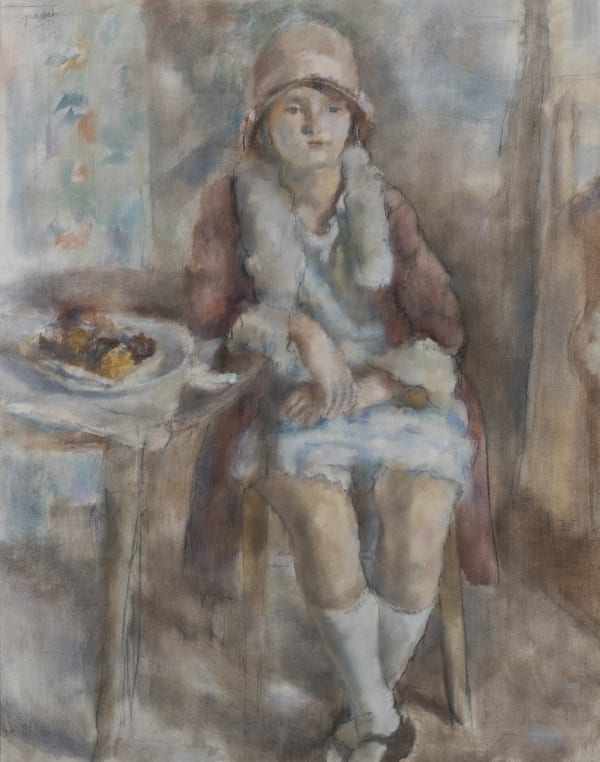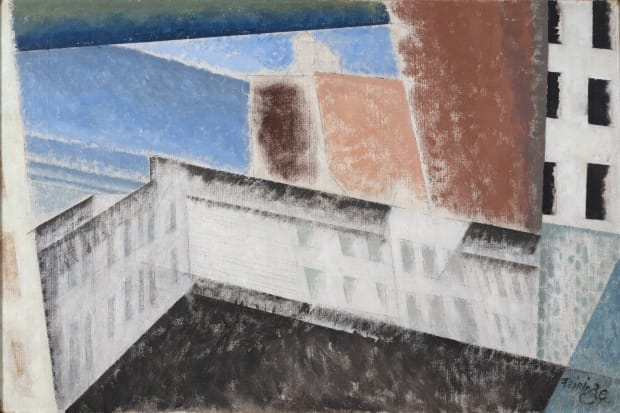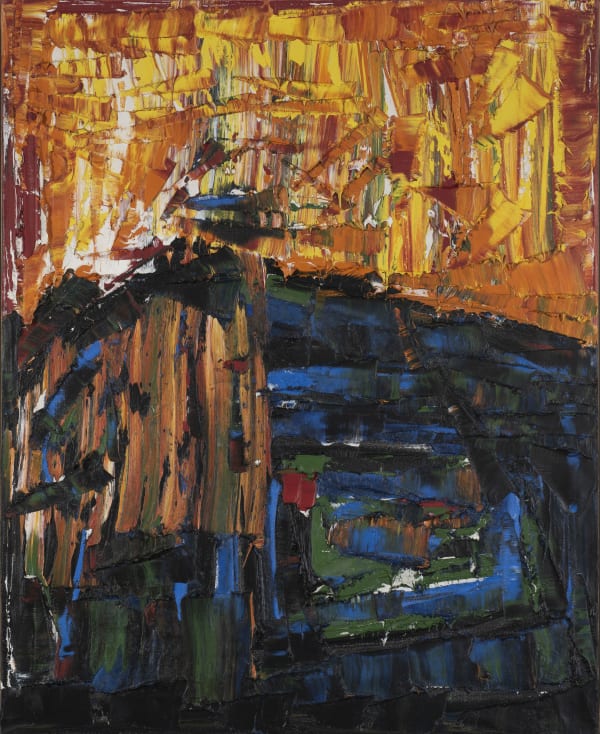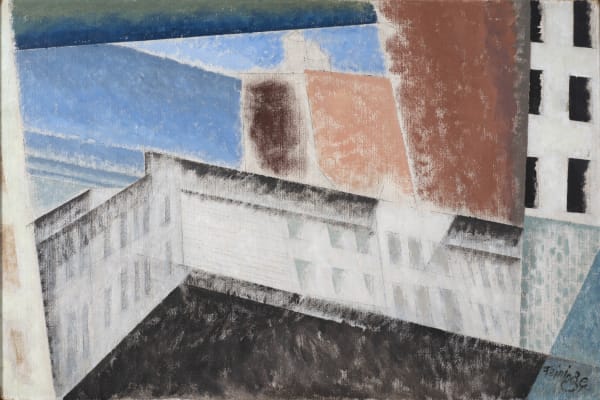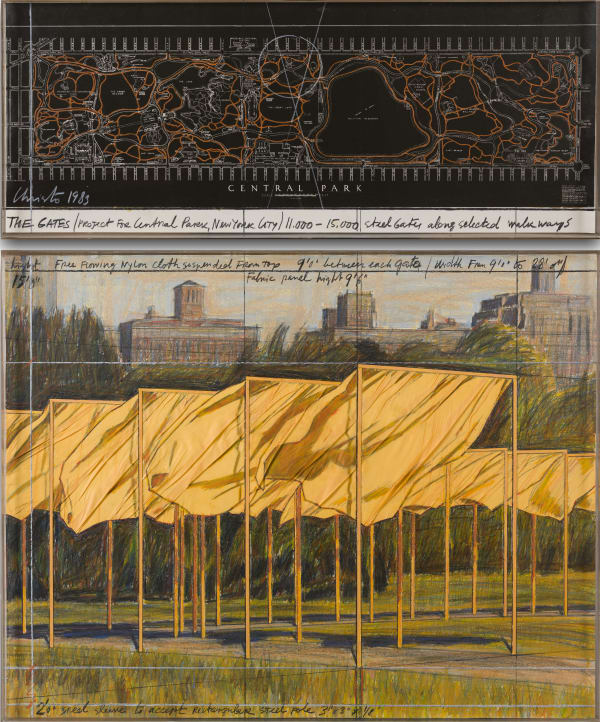LYONEL FEININGER 1871-1956
Architectural Composition I, 1940
“New York is the most amazing city in its atmosphere, colour and contrasts, in the whole world.”
Lyonel Feininger
Feininger returned to New York in 1937 and quickly became absorbed in the city, continually depicting its architecture and the skyline it formed. Architectural Composition I is an important example of Feininger’s New York period. It displays Feininger’s development of a delicate geometric style composed of interlocking translucent planes, suggestive of both light rays and architectural forms. By representing the metropolis as a dynamic world of rhythm and movement he highlights and accentuates the beauty of the city.
Feininger loaned Architectural Composition I to MoMA for two exhibitions, one in 1944-5 and the next six years later in 1951-2. In 1956, the year he died, Feininger was chosen to be part of the American Pavilion at the Venice Biennale. Entitled American Artists Paint the City, the exhibition included Georgia O’Keffe, Jackson Pollock, Franz Kline and Willem de Kooning. Architectural Composition I was one of three Feininger paintings displayed. In the accompanying catalogue Katharine Kuh, curator of the Pavilion, described how Feininger ‘condenses and symbolizes all the shining lights of America’.
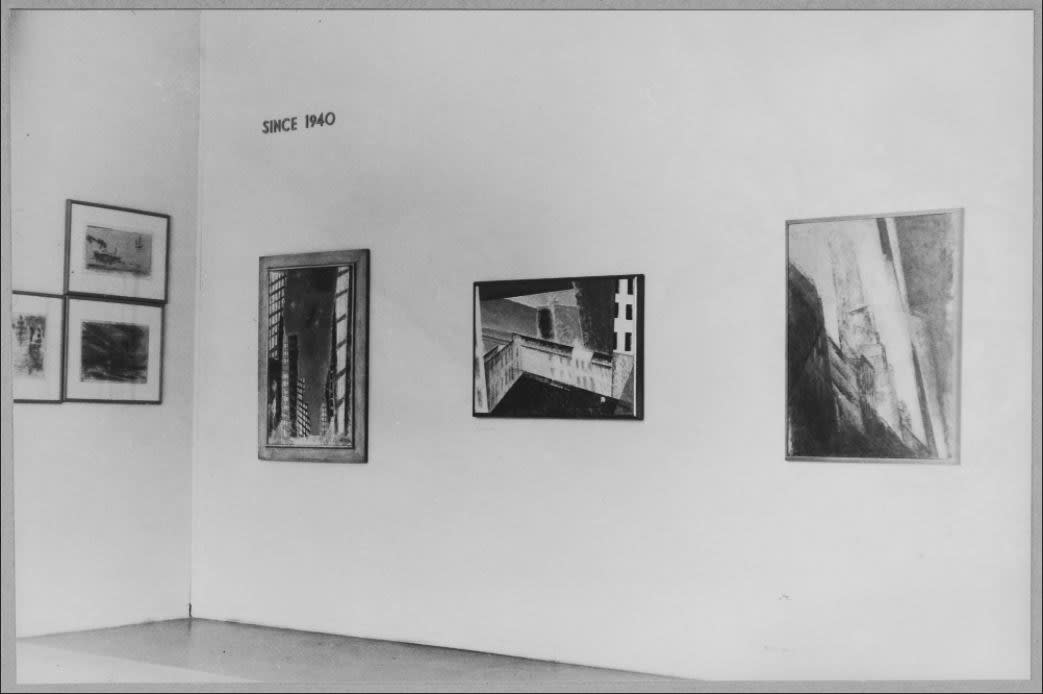
Architectural Composition I MoMA 1944-5









